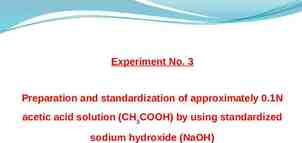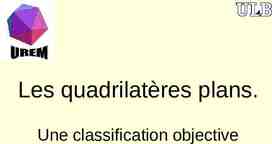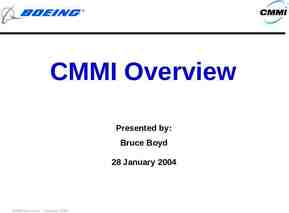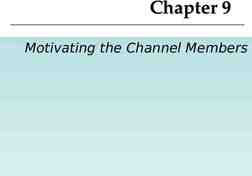Health Canada and the Public Health Agency of Canada Santé Canada et
27 Slides4.03 MB
Health Canada and the Public Health Agency of Canada Santé Canada et l’Agence de la santé publique du Canada An Introduction to the GC Minimum Viable Business Architecture Playbook For discussion purpose Last update: September 2022
Outline 1. Purpose 2. Vision for EA and EBA 3. MVEA practice elements Appendix H E A LT H C A N A D A P U B L I C H E A LT H A G E N C Y O F C A N A D A
1. Purpose Purpose of this work and subgroup is to co-develop a Minimum Viable Business Architecture Practice across the GC, which would: Support lower maturity/complexity smaller departments and agencies in establishing a viable and sustainable BA practice (accelerator) Serve as a formal baseline / lowest common denominator for a GC E/BA practice (consistency) From there, departments could add whatever suits their specific architecture needs, as long as we would share common foundations: A common vision of BA with a minimal value proposition Minimal Stakeholders and Roles Minimal Services with Key Activities with their outputs / artefacts/ del;ioverables / Minimal Metamodel and Knowledgebase (BA Repository) Skillset and competencies etc. and additional resources H E A LT H C A N A D A P U B L I C H E A LT H A G E N C Y O F C A N A D A
1. Purpose Key principles framing the MVBA WG work and deliverables: Minimal Viable BA Framework, can’t be too specific and prescriptive; if any HOW must be very high-level Allow for a flexible application: offers a “menu” / options that would fit the particular context and size of the Organization; “3 Tiered-approach/Artefacts” ( a Tier 0?) serving as a Menu and/or a Practice Roadmap Keeps the Architecture lingo & “complexity” hidden from users – focuses on VALUE Focused on the WHY/WHAT/WHERE/WHEN/WHO before the HOW – value proposition and purpose before models & artefacts; Anchored in the GC EA Framework and Practice; GC EA BizArch ‘Guide’ vs our work here Pragmatic (what has been proven to work); realistic (what CAN be; not SHOULD be); lucid (“culture eats strategy for breakfast”); Simple (easy to implement). “Implementable / Usable” H E A LT H C A N A D A P U B L I C H E A LT H A G E N C Y O F C A N A D A
2. Vision for EA and BA
Let’s first agree on a EA vision 3) (1 of What is EA? “Enterprise Architecture is the design, improvement and optimisation of information-intensive business systems” – Graham Berrisford “Architects are largely on the wrong track. They are focused on how to create a well-structured enterprise architecture instead of how to create a well-architected organization.“ Enterprise Architects are the urban planners of digital organizations. They provide a “framework to digital transformation” “The urban planner looks at how all the individual buildings fit together, considers how the structure and layout of a city affect the lives of its inhabitants, and helps to realize the overall vision of the city” “Urban planners not only set building codes and plans common services such as roads and water, they actively participate in making those plans a reality.”
How should this evolve in a growing ‘Product Management’ approach? Does it impact the HOW only or also the WHAt; WHERE; WHEN; WHO Let’s first agree on an EA vision of 3) (2 What is EA’s purpose? “The primary purpose of Enterprise Architecture is to inform, guide and constrain the decisions made by an enterprise, especially those related to investments.” - DNDAF Minimal Value Items: Additional Value Items (not an exhaustive list): Enables the Department/Agency to develop more strategic Investment plans Reduces overall complexity and improves operational sustainability; foster longer-term operating model transformation Enables employees at all levels to embrace a culture of continuous innovation and adopt a horizontal approach in furthering government business Brings a broad view to investment decisions; maximizes investment returns, aligning shortterm & local needs with long-term & strategic direction Guide investments to reusable solutions, solution components and solution designs Ensures that decisions are deliberate in cases where a program will not use an enterprise solution
Let’s first agree on an EA vision of 3) (3 How does EA work? “An enterprise architecture is a corporate asset that is both a practice and a tool.” https://pubs.opengroup.org/dpbok/standard/chap-arch-portfolio.html#defining-ea An EA program as “the means to deliver and maintain the enterprise information required for enterprise decision-making” An EA Program to “align and manage the development of capabilities with established business priorities” An EA Program that is Business outcome-driven: EA supporting the delivery of business value and business priorities; EA can’t simply be a “compliance stick” in this fast-evolving digital era Actionable and Just-Enough, Just-in-Time: providing actionable guidance to initiatives and services through “signature-ready recommendations”; As per Gary Doucet: “Think global, Act local”
What is Business Architecture, in this context? “Let’s work the problem, people. Let’s not make things worse by guessing.” Gene Kranz, Flight Director Apollo 13 About: Explore and Refine the Business Problem Business focus Ensure a clear understanding of the business problem before discussing solutions. Business problems and opportunities focus Early engagement with TBS to ensure alignment prior to proceeding with the investment planning process. Ensure that investments are conceived in a manner that aligns with the Government of Canada’s Digital Standards. Don’t Jump Directly to Solutions
What is Business Architecture, in this context? Key concepts and principles: Three layers of Value: replacing the traditional “carrot vs stick” with “local value AND enterprise value”: 1. ‘Big E’ Value: GC value. Often the initial driver to establish the EA/BA team. 2. ‘Small E’ value: Departmental value. Better Departmental performance, risk management, etc. 3. ‘Local’ value: Making sure that programs and initiatives engaged with BA get value from it (the only way to make the practice sustainable). Scope of the BA practice based on Who it services and Where it sits: 1. BA part of EA, serving the CIO (most of current GC BA practices & teams); 2. BA part of EA, serving the CIO and COO/CEO (Strategic Business Architecture); or 3. BA stand-alone, serving the CIO and COO/CEO (Enterprise Business Architecture). BA Practice shouldn’t rely on “selling” it – value should drive its adoption. BA is a lot about spending time on the problem before discussion solution; which does require a change in culture. Start with a heatmap / list of valuable items and related activities. Prioritize them. BA should have a strong role in demand intake and project planning at the onset. Make Business Architecture and EA "doable" by multiple groups on the department. Cut through the notion that EA is a closed off island that is mysterious and impractical to everyone else in the department. Particularly Business Architecture is the most "accessible" of the domains and if we can create an MVP that can be reused and adopted by multiple teams within a department then that will be a success.
3. MVEBA practice elements
MVBA Table of Content A repeatable approach to prioritize the BA effort (based on the departmental context, priorities, etc.); BA outcomes/benefits/metrics; BA outputs; BA services model with supporting outputs and integration points: o o o o Relationship with Clarity/APM and the broader GC EA with supporting BA content (such as BA artefacts and Knowledgebase); Review the GC BA Guide BA Scenarios / “use cases” / incl. in the area of Investment management and existing practices in GC Dep’ts BCM and ACM and other Ref models to develop or use (and when/how to use them), including in support of GC EARB presentations Potential services already flagged: Business clarity service (in a broad GC and Departmental context); Advising the business planning (digital portfolio); and Representing the Organization to external stakeholders (to Industry). RACI - Associated [extended] Roles & Responsibilities.;WHO: Roles and Exprtise Expected Size / Cost of a MVBA? (ratio?); and Additional: Contacts; Ent/Int Resources; “Educational”/Evangelization” material H E A LT H C A N A D A P U B L I C H E A LT H A G E N C Y O F C A N A D A
EA Operating Model Patterns Three “iterations” of E/BA Operating Models based on capacity more than maturity: Minimum Viable EA: An EA “Light” Mostly tactical Mostly reactive Often, but not necessarily, IT-driven Focused on engaging with and advising major initiatives No knowledgebase; highly dependant on the knowledge of individual architects Embedded EA: Strategic EA: A fully established EA Mostly Strategic Mix of Reactive and Preemptive / Anticipative Business-driven but still mostly IT-centric Includes some enterprise knowledgebase used to store & generate artefacts Strategic – overseeing tactical alignment Mostly Pre-emptive / Anticipative Business-driven and both business & IT-centric Includes an enterprise knowledgebase accessed and leveraged by non-architects to produce insight H E A LT H C A N A D A P U B L I C H E A LT H A G E N C Y O F C A N A D A
BA Operating Model Patterns Minimum Viable EA: Minimal Business Architecture: Business Architecture is embedded within the EA practice through some of the EA deliverables and activities Strategic EA: Strategic Business Architecture: Business Architecture is formalized as an EA domain with a Business Architect role (full-time or not) included in the overall Organization architecture framework & practice Embedded EA: Enterprise Business Architecture: Business Architecture is elevated to an enterprise practice, lives outside EA and serves business purposes H E A LT H C A N A D A P U B L I C H E A LT H A G E N C Y O F C A N A D A
Scope Minimum Viable EA: Strategic EA: Embedded EA: H E A LT H C A N A D A P U B L I C H E A LT H A G E N C Y O F C A N A D A
Key Stakeholders Minimum Viable EA: Strategic EA: Embedded EA: Practitioners: Practitioners: Practitioners: Enterprise Architects Some Domain Architects (might not be under EA functional authority) Some Solution Architects (might not be under EA functional authority) Enterprise Architects Segment / Portfolio Architects (for larger organizations) Domain Architects (framed by EA) Solution Architects (framed by EA) Enterprise Architects Segment / Portfolio Architects (for larger organizations) Domain Architects (contributing to EA) Solution Architects (contributing to EA) Technical Architects? Core EA Clients & Partners Core EA Clients & Partners Core EA Clients & Partners IT Business Relationship Managers Project and Programme Managers Business & Data Analysts Solution Architects & Engineers Business Owners / Executives IT Service Managers and Centers of Expertise IT Business Relationship Managers Application and Technology Portfolio Management Office Enterprise Project Management Office Chief Data Office Business Owners / Executives Business & IT Planners Business, Vendor and IT Relationship Managers Application and Technology Portfolio Management Office Chief Digital Office Senior Governance Bodies Business & IT Planners H E A LT H C A N A D A P U B L I C H E A LT H A G E N C Y O F C A N A D A
Key Services and Activities Minimum Viable EA: Strategic EA: Advisory Service – Major Initiatives & Projects Advisory Service – Major Initiatives & Projects Establish standards, principles and guidelines and actively promote and align transformation efforts to those standards Maintain standards, principles and guidelines and actively promote and align transformation efforts to those standards Architecture Development and “Evangelization” service: strengthen and spread the enterprise perspective Advisory Service - Investment Portfolio & Plans Collaborate with business lines to identify opportunities for improved business value through digital enablement. Embedded EA: Maintain standards, principles and guidelines and oversee alignment to those standards Advisory Service - Investment Portfolio & Plans Collaborate with business lines to identify opportunities for improved business value through digital enablement. Develop IM/IT Strategies to realize the capabilities required by the Organization Develop IM/IT Strategies to realize the capabilities required by the Organization Oversee innovative proof of concepts to drive HC-PHAC architecture Advise innovative proof of concepts to drive HC-PHAC architecture Actively participate in the delivery of digital change within the organization to achieve its digital transformation, especially through the introduction of key capabilities and innovative technology. H E A LT H C A N A D A P U B L I C H E A LT H A G E N C Y O F C A N A D A
Knowledgebase Key Artefacts/Deliverables Minimum Viable EA: Strategic EA: Embedded EA: Knowledgebase: Knowledgebase: Knowledgebase: Single window to EA with a centralized information store for architecture artefacts and deliverables Basic/Foundational Enterprise [Architecture] Repository, used by architects only, with the following core concepts Extended Enterprise [Architecture] Repository offered as a service to partners Extended Enterprise [Architecture] Repository offered as a service to clients Additional enterprise objects to support Strategic and Embedded EA could include: Business Services Information Concepts / Business Data Entities Business Processes Strategic Outcomes Application Services / Microservices [ ] H E A LT H C A N A D A P U B L I C H E A LT H A G E N C Y O F C A N A D A
Proposed Key questions EA or BA? BA What is the output? H E A LT H C A N A D A P U B L I C H E A LT H A G E N C Y O F C A N A D A
Appendix
Architecture Guidance & Assurance across HC-PHAC investment lifecycle I N V E ST M E N T L I F EC YC LE Strategic Portfolio Initiative Solution Delivery Planning Planning and Management Definition and Planning Design to Deployment Benefit Realization Strategic requirements Policy requirements Enterprise / Business Architecture Clarify enterprise strategy (official, emerging and shadow) and describe the resulting enterprise future state Help define or reframe transformation and innovation opportunities aligned to business outcomes Establish more transparent, evidencebased decision-making on investment portfolio that reflects and leverages the enterprise needs and plans Help clearly articulate business impacts, benefits, constraints and integration potential of proposed change Soluti on Architecture Embed value / enterprise design requirements into conceptual solution design to maximize enterprise alignment and outcomes Identify major projects’ interdependencies and re-use opportunities Architecture objectives H E A LT H C A N A D A P U B L I C H E A LT H A G E N C Y O F C A N A D A
Architecture Guidance & Assurance across HC-PHAC investment lifecycle I N V E ST M E N T L I F EC YC LE Strategic Portfolio Initiative Solution Delivery Planning Planning and Management Definition and Planning Design to Deployment Benefit Realization Strategic requirements Policy requirements Enterprise Architecture Enterprise Frameworks, Reference Models and Standards Enterprise Capabilities Portfolio Management Enterprise Architecture Capability-based Guidance Concept Case Review EARB: Conceptual design endorsement Soluti on Architecture Solution Architecture QA and Guidance Business Analysis QA Option Analysis QA Procurement Guidance Technical Architecture Guidance Digital Transformati on Enablement (Project Portf olio Management Applicati on & Technology Portf olio Management IT Business Relati onship Management LEGEND: Minimum Viable EA Application Portfolio Project Portfolio EA Repository Strategic Objectives Business Programs and Branches Initiatives Enterprise Capabilities Enterprise Requirements Applications Architecture Delivery Strategic EA H E A LT H C A N A D A P U B L I C H E A LT H A G E N C Y O F C A N A D A
EXAMPLES What Value is Needed and Expected From EA? Enable Digital Business Use ecosystem modeling to identify new business models Explore how disruptive technologies will impact current business model Evolve business capabilities to accommodate right blend of agility, reliability, security and scalability Address Emerging Technologies Identify and proactively address risks and business opportunities resulting from cloud, social media, big data, mobility, internet of things, and so on. Plan how business capabilities need to evolve to address those risks and opportunities. Increase Speed and Agility Reduce time to market of new products/services. Enable new functionality needed. Enable interoperability and agility in response to changing needs. Reduce Risk Improve alignment of IT initiatives with strategic business needs. Reduce chance of "dead-end" technology investments. Improve Operational Efficiency Increase economies of scale through standards. Eliminate unused solutions, applications and technologies. Deliver a manageable IT environment. Improve Effectiveness Focus investment where it produces the most business value. Improve user experience by reducing complexity.
How can we leverage opportunities to rebalance EA? Enterprise Scope Operations Architecture: Enterprise Architecture: Identify enterprise infrastructure services that can be shared or upgraded? Identify cost savings? Implement enterprisewide strategic capabilities such as collaboration, app integration or mobility? Tactical Focus Project Architecture: Address risks & opportunities from disruptive technologies? Improve investment management? Support budget cuts? Identify services that can be shared? Help M&A or divestitures? Program Architecture: Reduce project risk? Support reuse of existing enterprise services? Ensure development of new services that other solutions can leverage? Strategic Focus Support major business unit planning? Ensure that major systems upgrades build new holistic and integrated capabilities? Enable pace layering? Local Scope Graphic from Gartner
BMO EBA Lifecycle ‘Architecture’ stage: Support and and enable enable Support strategy development development strategy and strategic strategic planning planning and CORE BA BA CORE FOCUS FOCUS Future state architecture and standards Alignment with IT Strategy? Guide and and direct direct initiative initiative planning planning and and solution solutiondesign design Guide Provide alignment and traceability between strategy and Provide alignment and traceability between strategy and execution; and and between betweenbusiness business and and technology technology execution; H E A LT H C A N A D A P U B L I C H E A LT H A G E N C Y O F C A N A D A
Business Architecture enabling Strategy Execution H E A LT H C A N A D A P U B L I C H E A LT H A G E N C Y O F C A N A D A
Business Architecture enabling Solution Design & Deployment Source: A Guide to the Business Architecture Body of Knowledge (BIZBOK Guide) H E A LT H C A N A D A P U B L I C H E A LT H A G E N C Y O F C A N A D A
































